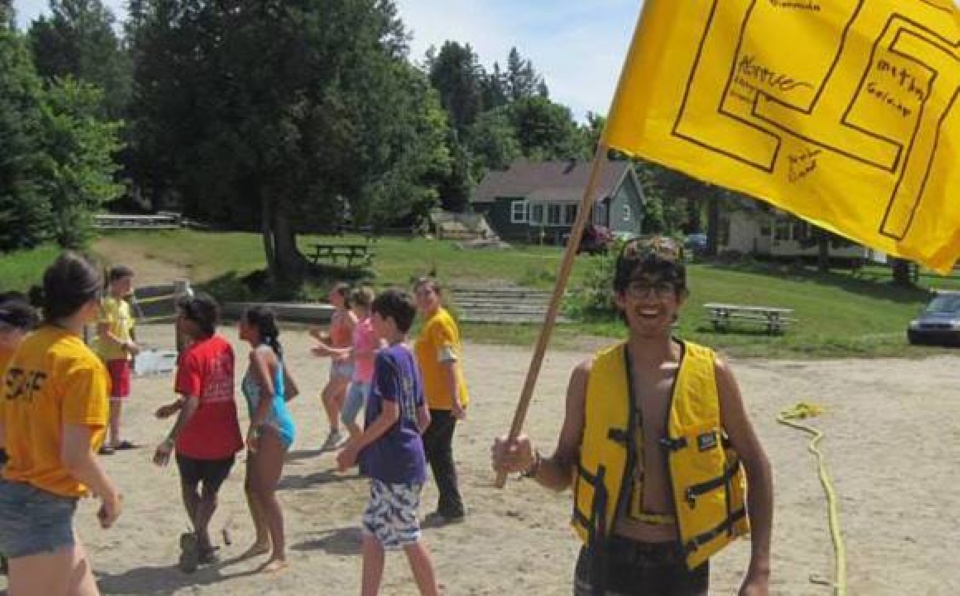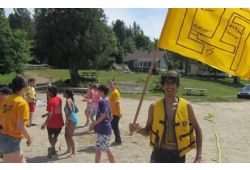What is leadership? What does it
mean to be a leader? Do we all have
the capacity to lead? What are some
of the attributes that we associate with a successful leader? Do those
attributes change from generation to generation
Throughout history charismatic leaders have always spearheaded in providing vision and
a sense of direction. They inspire
pride; gather the masses into a community. Inspirational leaders communicate
ideas and set important goals and purpose in many different ways. We recognize these leaders as transformational leaders, and often times
these people stand out in a crowd, leading the masses on large or small scales. What are some of the other types of leaders? How about those who recognize
accomplishments on small or large scales? Or those who step forward when they observe that situations are not
progressing in a structured way? Or those who step out of the crowd to control a
mob in a disaster or emergency situation?
We all have the ability to lead, although not all leaders are created equal,
and some people’s capacity to lead is greater than others.The question shouldn’t
be “if we lead” but “how we lead”.
Our leadership aptitude can set example
and help our youth develop the necessary skills to lead in the future.
Personality strengths, interests, personal background, disposition, and experience
to name a few, are factors needed to shape our personalized approach to
leadership. The current generation of
teachers, parents, sports coaches, instructors, animators and scouts (as well
as all other caring adults in the lives of our youths), hold certain aspects of
leadership that we’d like to impart on our youth.
Our focus should be on helping our youth
recognize when it is time to learn and to have the confidence to experience something
new, how to apply a set of skills and knowledge for such new experience. In the past decade, there was ample research
done on multiple intelligence―the various ways that individuals learn and apply
that learning to different situations. We are trying to help our youth to develop their personal strengths and
to help them make their “own” decisions.
Scouts Canada has recently taken on this
philosophy, through the Canadian Path, to promote youth leadership at home and
in the community. The Canadian Path is
based on four elements. Providing adventure
– an element to help entice our youth to participate in their personal lives in
a personally challenging meaningful way, and within their comfort zone. The plan;-do-review is something that we can
all implement on a regular basis with all age groups, and is the basic process
of all youth led activities. Have your
youth lead initiatives, whether helping out around the house or in the
community, make a plan, actually follow through with the plan, then follow up,
review it and come up with ideas on how to improve it the next time. The key is to encourage our youth to use
their own words in the brainstorming stages, making suggestions, and giving
input at all stages of the process. Allowing them to explore their own interests and in which way they
choose to engage in any activity. Support their choices and decisions (with
respect to safety and risk management), and allow them to explore their
creativity. By asking question such as,
what did you notice? What did you enjoy?
What was challenging for you in this activity? What did you learn? What might we do differently if we do this
again?
There are aspects that all youth require
at various stages and on various levels to help them learn about themselves and
others, and to assist them in discovering their own leadership styles. These are recognized in the Multiple Intelligences
and taught at high levels of management training programs. We will focus on those that Scouts Canada has
outlined in specific relation to youth leadership and development; S – Social,
P –Physical, I – Intellectual, C – Character, E- Emotional, S – Spiritual
(SPICES).
We at Tamaracouta Scout Reserve put all of
these practices into place within all of our programs. Whether your children are participating with
their school, as an individual, as a group or as a scout, all of the parameters
of personal development occur within our programs. We work to enable the youth to develop the
confidence and skills required to become a strong leader within their
communities.
Imagine participating in the following
program –
Kids gather at the beach and are divided
in small groups of 2-3 people. They are
given a map of the lake, a compass, a canoe (and pertinent equipment) and a
small bag of miscellaneous items. There
is a bearing on the
map.
The kids gather and head out on the lake
to follow their bearing, all heading to different parts of the lake, in which
they all collect various supplies (stoves, matches, food, wooden poles, rope,
etc.) and more compass bearings
to take them to another location.
Once at the “final destination” they
realize that between all of the canoe groups they have collected everything
they need to make their hot meal and make shelters for the night.
SOCIAL;
Socially what is going on above – Can you
imagine the youth getting to know each other, learning about each other’s
strengths and weaknesses? Can you hear them agreeing and disagreeing about how
to paddle the canoe, how to build a fire, what to cook for their meal, delegating
tasks?
Wouldn’t all of that communication allow
for consensus building? Teamwork? Communication skills?
Does it matter if these youth become life-long
friends or never see each other again? Does this relate to the real world in any way?
Following up with questions for the youth
such as;
- Did you and your team mates make a plan? Was that plan successful?
- How did things change when you realized that all of the teams were working towards the same goals
- Would you change any of your actions, knowing what you know now?
PHYISCAL;
We are also very aware that our youth are, on average, not as physically active as we were in the past. We are aware that kids nowadays are spending more time inside due to all the gadgets available to them rather than playing with their friends in the neighbourhood. The activity aforementioned is obviously a physical one so, does it allow for the youth to develop basic proficiency in various physical capacities? While outdoors, kids are put to the test when faced with nature and weather conditions which are out of their control ―they may feel exhausted but this experience calls for a level of confidence, sets of skills, endurance and strength.
INTELLECTUAL;
Going back to the previous scenario – imagine the thoughts that would go through their head at the different stages of the “game”. Would this be second nature to them? Will they be able to build a fire and shelter, cook dinner and sleep outdoors? How would the kids feel after learning they succeeded in the task assigned? Imagine how much they’ll learn in such a short period of time, including making important decisions that would affect them individually and as a team.
CHARACTER;
Leadership skills are all based on the development of character, as mentioned above.We’re all unique and it’s this individuality that allows us to step forward to take a leadership role. When faced with these types of challenges, it allows us to recognize what we’re capable of, what our limitations are, and how we can push our limits.
EMOTIONAL;
Emotional outlets are an amazing way for us to learn and grow. Reminiscing about the positive and/or challenging moments in our past are almost always linked to emotional moments. Imagine all of the emotional processes involved in the aforesaid scenario. Would your personal emotional processing change if the weather was perfect? How would you respond to any of your teammates if he/she decided to build a different shelter instead of what you had suggested– how would you deal with it, and how do you think the youth will be able to react and respond to a similar situation?
SPIRITUAL;
Whether you provide a formalized or informal spiritual moment in the life of a youth, it is the process of internalization that is paramount. Respect and understanding for themselves and one another help create a positive and supportive leader.
Right from the start, Lord Baden-Powell’s vision for Scouting was of a program in which the youth took responsibility for their activities and adventures. The development of our youth in the aspects of leadership, personal skill sets and confidence play a very important role within their families and community. Furthermore, the adults in their lives should give them the opportunity to take charge of their lives more often so they can grow in a productive and positive way. Our role is to be an active participant in mentoring, encouraging, guiding and inspiring the youth to develop their own leadership style.
Scouts are ultimately responsible for creating safe, inclusive, and fun environments where youth can take on increasing responsibility and leadership roles. To allow the youth to determine the leadership attributes that will be required in their future roles as they grow into adulthood.
http;//www.scouts.ca/canadianpath/four-elements.html
http;//www.scouts.ca/canadianpath/spices.html

 In The Latest Issue:
In The Latest Issue:





Tweet
Share